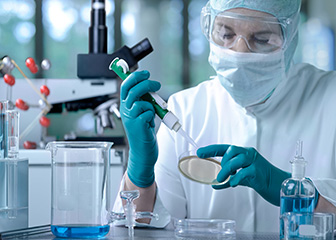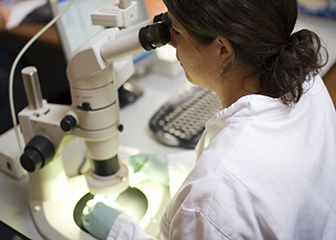
Microbiologists study the growth and characteristics of microscopic organisms such as viruses.
A bachelor’s degree in microbiology or a closely related field is needed for entry-level microbiologist jobs. A Ph.D. is needed to carry out independent research and to work in colleges and universities.
Education
Microbiologists need at least a bachelor’s degree in microbiology or a closely related field such as biochemistry or cell biology. Many colleges and universities offer degree programs in biological sciences, including microbiology.
Most microbiology majors take introductory courses in microbial genetics and microbial physiology before taking classes in more advanced topics such as environmental microbiology and virology. Students also must take classes in other sciences, such as biochemistry, chemistry, and physics, because it is important for microbiologists to have a broad understanding of the sciences. Courses in statistics, mathematics, and computer science are important for microbiologists because they must be able to do complex data analysis.
It is important for prospective microbiologists to have laboratory experience before entering the workforce. Most undergraduate microbiology programs include a mandatory laboratory requirement, but additional laboratory coursework is recommended. Students also can gain valuable laboratory experience through internships with prospective employers such as drug manufacturers.
Microbiologists typically need a Ph.D. to carry out independent research and work in colleges and universities. Graduate students studying microbiology commonly specialize in a subfield such as bacteriology or virology. Ph.D. programs usually include class work, laboratory research, and completing a thesis or dissertation. It typically takes 4 to 6 years to complete a doctoral degree program in microbiology.
Training
Many microbiology Ph.D. holders begin their careers in a temporary postdoctoral research position, which typically lasts 2 to 3 years. During their postdoctoral appointment, they work with experienced scientists as they continue to learn about their specialties or develop a broader understanding of related areas of research.
Postdoctoral positions typically offer the opportunity to publish research findings. A solid record of published research is essential to get a permanent position in basic research, especially a permanent faculty position in a college or university.
Important Qualities
Analytical skills. Microbiologists must be able to conduct scientific experiments and analyses with accuracy and precision.
Critical-thinking skills. Microbiologists draw conclusions from experimental results through sound reasoning and judgment.
Interpersonal skills. Microbiologists typically work on research teams and thus must work well with others toward a common goal. Many also lead research teams and must be able to motivate and direct other team members.
Mathematical skills. Microbiologists regularly use complex mathematical equations and formulas in their work. Therefore, they need a broad understanding of mathematics, including calculus and statistics.
Observation skills. Microbiologists must constantly monitor their experiments. They need to keep a complete, accurate record of their work such as conditions, procedures, and results.
Perseverance. Microbiological research involves substantial trial and error, and microbiologists must not become discouraged in their work.
Problem-solving skills. Microbiologists use scientific experiments and analysis to find solutions to complex scientific problems.
Speaking skills. Microbiologists frequently give presentations and must be able to explain their research to others.
Writing skills. Microbiologists write memos, reports, and research papers that explain their findings.
Advancement
Microbiologists typically receive greater responsibility and independence in their work as they gain experience. They also gain greater responsibility through more education. Ph.D. microbiologists usually lead research teams and control the direction and content of projects.
Some microbiologists move into managerial positions, often as natural sciences managers. Those who pursue management careers spend much of their time on administrative tasks such as preparing budgets and schedules. For more information, see the profile on natural sciences managers.













